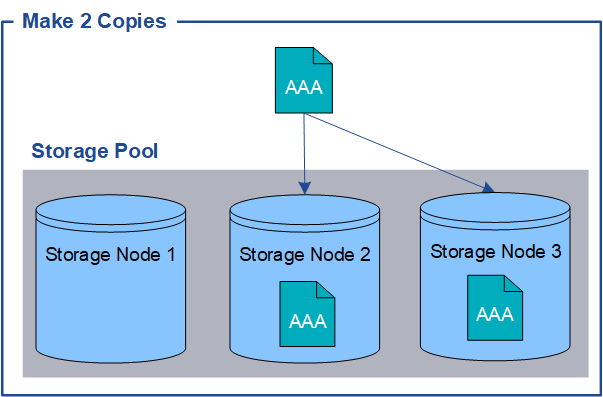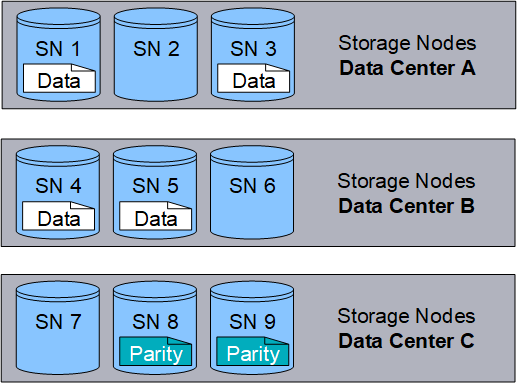How object data is protected
 Suggest changes
Suggest changes


The StorageGRID system provides you with two mechanisms to protect object data from loss: replication and erasure coding.
Replication
When StorageGRID matches objects to an information lifecycle management (ILM) rule that is configured to create replicated copies, the system creates exact copies of object data and stores them on Storage Nodes, Archive Nodes, or Cloud Storage Pools. ILM rules dictate the number of copies made, where those copies are stored, and for how long they are retained by the system. If a copy is lost, for example, as a result of the loss of a Storage Node, the object is still available if a copy of it exists elsewhere in the StorageGRID system.
In the following example, the Make 2 Copies rule specifies that two replicated copies of each object be placed in a storage pool that contains three Storage Nodes.

Erasure coding
When StorageGRID matches objects to an ILM rule that is configured to create erasure-coded copies, it slices object data into data fragments, computes additional parity fragments, and stores each fragment on a different Storage Node. When an object is accessed, it is reassembled using the stored fragments. If a data or a parity fragment becomes corrupt or lost, the erasure coding algorithm can recreate that fragment using a subset of the remaining data and parity fragments. ILM rules and erasure coding profiles determine the erasure coding scheme used.
The following example illustrates the use of erasure coding on an object's data. In this example, the ILM rule uses a 4+2 erasure coding scheme. Each object is sliced into four equal data fragments, and two parity fragments are computed from the object data. Each of the six fragments is stored on a different Storage Node across three data centers to provide data protection for node failures or site loss.



